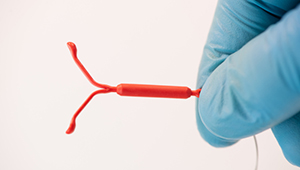Laura E. Ichikawa, MS
Biography
With more than 25 years at Kaiser Permanente Washington Health Research Institute (KPWHRI), Laura Ichikawa, MS, is known for her analytical skills, attention to detail regarding study design and data management, and knowledge in data visualization. Her experience includes observational studies, randomized controlled trials, case-control studies, and multisite analyses.
Laura is primarily focused on cancer research and women’s health. She’s has been involved with the Statistical Coordinating Center for the Breast Cancer Surveillance Consortium (BCSC), funded by the National Cancer Institute. She leads both data management activities and statistical analyses for the BCSC, where much of her work has been evaluating mammography performance for both screening and surveillance while also examining use of screening MRI (magnetic resonance imaging) and ultrasound. Laura also participated in collaborative research through the Cancer Research Network, including a widely publicized 2004 study that linked not having screening mammograms to late-stage breast cancer and, more recently, the Population-based Research to Optimize the Screening Process (PROSPR) project focusing on colorectal cancer screening. She is excited to continue her work in cancer research, including in screening, treatment, surveillance, and survival.
Laura’s earlier research with retired KPWHRI Senior Investigator Delia Scholes, PhD, included studies examining bone loss associated with the injectable hormonal contraceptive Depo-Provera in 2002 and 2005 and oral contraceptives in 2011.
Laura is a member of the American Statistical Association and its Puget Sound chapter.
Research interests and experience
-
Biostatistics
Longitudinal data analysis
-
Cancer
Biostatistics; breast cancer
-
Women's Health
Biostatistics; hormonal contraception and bone density
Recent publications
Lee CI, Ichikawa L, Rochelle MC, Kerlikowske K, Miglioretti DL, Sprague BL, DeMartini WB, Wernli KJ, Joe BN, Yankaskas BC, Lehman CD. Breast MRI BI-RADS assessments and abnormal interpretation rates by clinical indication in US community practices. Acad Radiol. 2014 Nov;21(11):1370-6. doi: 10.1016/j.acra.2014.06.003. Epub 2014 Aug 7. PubMed
Spangler L, Ichikawa LE, Hubbard RA, Operskalski B, LaCroix AZ, Ott SM, Scholes D. A comparison of self-reported oral contraceptive use and automated pharmacy data in perimenopausal and early postmenopausal women. Ann Epidemiol. 2015 Jan;25(1):55-9. doi: 10.1016/j.annepidem.2014.10.009. Epub 2014 Oct 16. PubMed
Wernli KJ, DeMartini WB, Ichikawa L, Lehman C, Onega TL, Kerlikowske K, Gellar BM, Hofmann M, Yankaskas BC; for the Breast Cancer Surveillance Consortium. Patterns of breast magnetic resonance imaging use in community practice. JAMA Intern Med. 2014 Jan;174(1):125-32. doi: 10.1001/jamainternmed.2013.11963. Epub 2013 Nov 18. PubMed
Carney PA, Parikh J, Sickles EA, Feig SA, Monsees B, Bassett LW, Smith RA, Rosenberg R, Ichikawa L, Wallace J, Tran K, Miglioretti DL. Diagnostic mammography: identifying minimally acceptable interpretive performance criteria. Radiology. 2013 May;267(2):359-67. doi: 10.1148/radiol.12121216. Epub 2013 Jan 7. PubMed
Rillamas-Sun E, Ichikawa L, LaCroix A, Ott S, Hubbard R, Spangler L, Scholes D. Ps2-28: The association of body composition indices and hormonal contraceptive use in adolescent and young adult women. Clin Med Res. 2012;10(3):186. PubMed
Gierach GL, Ichikawa L, Kerlikowske K, Brinton LA, Farhat GN, Vacek PM, Weaver DL, Schairer C, Taplin SH, Sherman ME. Relationship between mammographic density and breast cancer death in the Breast Cancer Surveillance Consortium. J Natl Cancer Inst. 2012;104(16):1218-27. Epub 2012 Aug 21. PubMed
Grafton J, Ott S, Endres J, Kratohvil C, Hubbard R, Ichikawa L, St John J, Operskalski B, Spangler L, Anderson J, Rillamas-Sun E, LaCroix A, Scholes D. Ps1-52: Charting the course: adjudicating fractures in network enrollees using the electronic medical record. Clin Med Res. 2012;10(3):165. PubMed
Spangler L, Grafton J, Ichikawa L, LaCroix A, Ott S, Hubbard R, Operskalski B, Anderson J, Kratohvil C, Endres J, Rillamas-Sun E, Scholes D. Ps2-29: Comparison of self-reported oral contraceptive use and automated prescription fills. Clin Med Res. 2012;10(3):186-7. PubMed
Geller BM, Ichikawa L, Miglioretti DL, Eastman D. Web-based mammography audit feedback. AJR Am J Roentgenol. 2012;198(6):W562-7. PubMed
Scholes D, Hubbard R, Ichikawa LE, LaCroix AZ, Spangler L, Beasley JM, Reed S, Ott SM. Oral contraceptive use and bone density change in adolescent and young adult women: a prospective study of age, hormone dose, and discontinuation. J Clin Endocrinol Metab. 2011 Sep;96(9):E1380-7. Epub 2011 Jul 13. PubMed
Research

Study measures risks of screening colonoscopies for older adults
The findings can help guide colorectal cancer screening decisions later in life.
Research

IUD perforation: Rare but important to know about
New study results in more precise language in the federally mandated warning about this possibility.
cancer research

Using breast MRI after cancer may lead to unneeded biopsies
A Kaiser Permanente-led BCSC study is among the largest ever to evaluate adding MRI surveillance for breast cancer survivors.
cancer screening

No need to follow up simple ovarian cysts
New KPWHRI study shows that women with simple cysts are not at increased risk of ovarian cancer.



